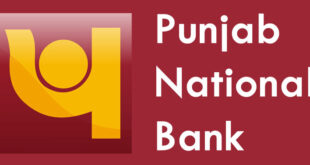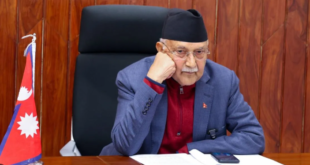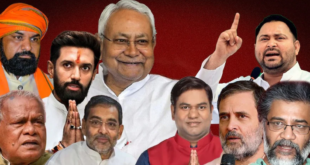 Dr. Utkarsh Sinha
Dr. Utkarsh Sinha
The 11th General Convention of the Communist Party of Nepal (Unified Marxist–Leninist), or UML, scheduled for December 12–14, 2025, comes at a historic juncture. The Gen Z movement that swept through Nepal earlier in the year did more than bring down the KP Sharma Oli-led government—it fundamentally shattered the perceived invincibility within UML’s organizational culture. As a result, pressure in the party for change has reached boiling point.
The Collapse and Aftermath
Following mass protests and a rapidly shifting social climate, KP Sharma Oli’s government fell. The protestors’ demands included not just government accountability but also deep reforms within the ruling party itself. Internal opposition seized the moment: for months, the anti-Oli camp, most vocally championed by the Bidhya Bhandari faction, urged for a Special General Convention and for Oli to step aside—a call that would have seemed radical just a year ago.
The Convention Gambit
Rather than go quietly, Oli surprised many by accelerating the party’s regular General Convention, seeking to use the moment to re-establish his strength via internal elections. With the organizational structure still largely in his control, Oli called for an early convention through a Central Committee meeting, sidestepping (at least for now) a more unpredictable Special General Convention.
Factions and Realignments
Oli retains a full majority and strong command over UML’s central machinery. Yet, several longtime lieutenants have now shifted toward Bidhya Bhandari’s camp, narrowing Oli’s authority. Despite this, Bidhya Bhandari’s return path into active party leadership appears blocked—an uneasy equilibrium where neither faction can be discounted.
The tug-of-war has energized both sides. Insiders now expect sharp contests for key posts through open elections. For example, Ishwar Pokharel is widely tipped as the rival camp’s candidate for Vice Chair, signaling that the convention could be genuinely competitive for the first time in many years.

Also Read : The Question of Morality Raised After the Letter to Rahul by 272 Former Officials and Judges
Also Read : Emerging Power Equations in Nepal Will Reshape the Political Landscape
In perhaps his most tactical move, Oli has embraced Ramkumari Jhakri, a figure with a complex history in UML: she previously played a key role in splitting the party but more recently led the “Ghar Farka” (Return Home) campaign, reintegrating former leftist cadres, including those from the Unified Socialist. With much of UML’s women’s base now leaning towards Bidhya Bhandari, Jhakri’s visible prominence positions her as Oli’s most reliable woman leader moving forward.
Her countrywide mobilization of party workers in preparation for the General Convention has further cemented her as a central pillar of Oli’s refreshed leadership circle.
Looming Questions and New Alliances
How the two rival camps shape their teams remains the defining drama. Most observers expect Oli to win re-election as chair, but the real intrigue lies in team-building: which figures get included, which groups or regions get priority, and what accommodations are given to rising youth, women, and “returned home” ex-cadres.
There is also a strong national undertone: with UML seemingly regaining momentum, talk of a post-interim government shift in the national parliament is growing louder. Around Oli’s new six-point agenda, there are hints of new polarization across Nepal’s left.
Energizing the Base
UML’s rallies ahead of the convention have showcased renewed vitality among its base. Large-scale demonstrations, strategic media messaging, and youth mobilization have reinvigorated party spirits at the grassroots. The organizational committees, led by well-tested hands, are steaming ahead with preparations, ensuring the convention will not just be a coronation, but potentially a true contest.
The Road Ahead
What emerges from the 11th General Convention will set the tone for UML’s future—for both party and country. If Oli consolidates his hold but is forced into greater inclusivity, UML could emerge with new internal balances and fresh legitimacy. If dissent hardens, the convention could foreshadow more factional realignment or, in the worst case, splintering.
For now, all eyes are on December: the outcome will shape not just the leadership of UML, but the prospects for stability—or fresh turbulence—across Nepal’s entire political landscape.
(Author is Senior Journalist and expert of International affairs)
 Jubilee Post News & Views
Jubilee Post News & Views





